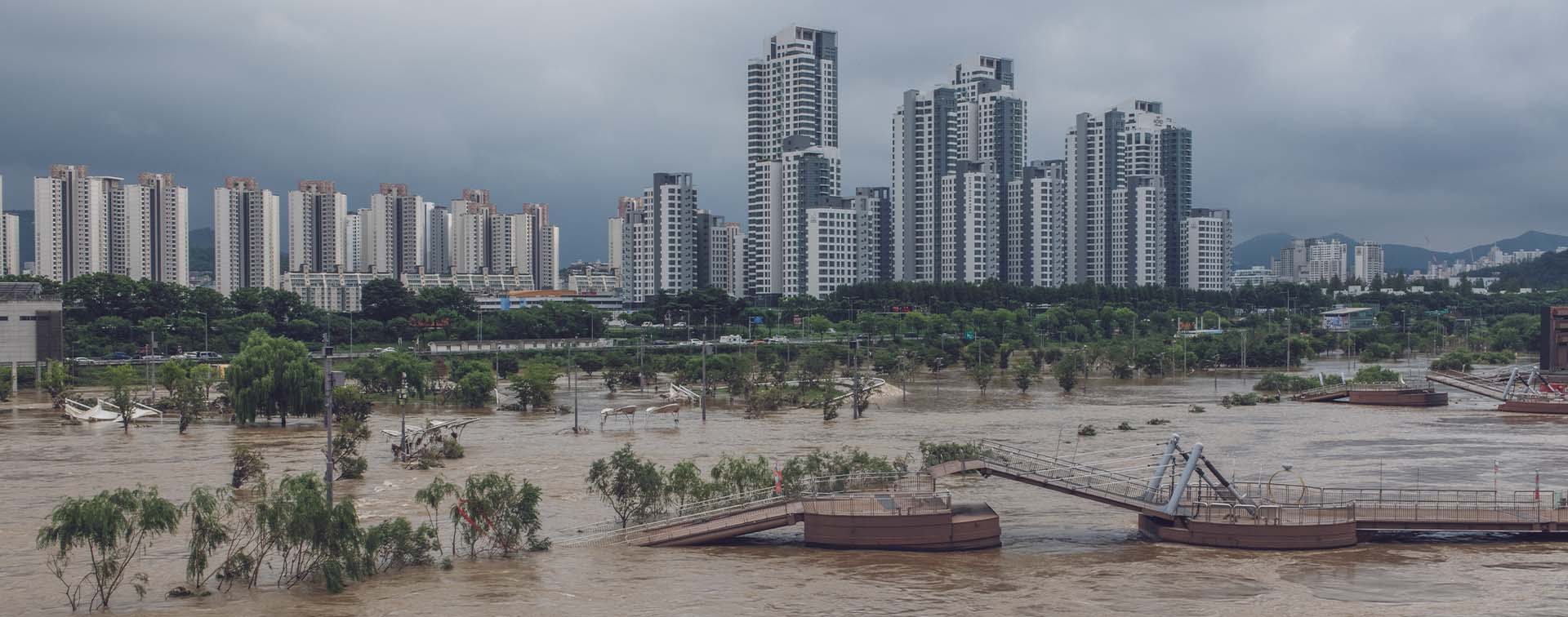
Charles Phillips is an independent researcher and consultant for Oxford Business Group whose field of expertise is energy and climate change policy in the Middle East.
As part of a new study, Henley & Partners has assessed 180 countries around the world according to how resilient they are to the adverse impacts of climate change. By combining GDP data (the average of GDP and GDP per capita) with data from the Notre Dame Global Adaptation Initiative (ND-GAIN), the new ranking indicates which countries are likely to be best to reside in from a climate resilience perspective. The ranking indicates where people, assets, and infrastructure are likely to be better protected from the now inevitable impacts of climate change.
Citizens, assets, and infrastructure are far more likely to be adversely affected in lower resilience countries. Citizens will be more at risk from extreme weather events, infrastructure will be both weaker and more exposed, and the ability to prepare for and respond to the aftermath of extreme weather events will be lower. Those residing in higher resilience countries are likely to be significantly better protected from the impacts of climate change, although they will not be completely untouched from changes in climate. Climate change will impact all parts of the Earth and all countries, but to varying extents, which is what this study helps to identify.

To mitigate the risk that the inevitable impacts of climate change pose, international investors in countries with lower climate resilience are likely to invest in countries with higher resilience. This is especially the case if international action on climate adaptation continues to be slower than it needs to be. At present, wealthier countries continue to fall short on their commitments to assist developing countries with substantial financial resources to implement climate adaptation measures.
This study is unique in the way it combines ND-GAIN data with GDP. ND-GAIN is a program led by the University of Notre Dame, which produces an annual Country Index summarizing countries’ vulnerability to climate change and readiness to convert financial investments (climate finance) into climate adaptation measures. By adding GDP data to the mix, Henley & Partners’ new ranking incorporates the important consideration of a country’s economic ability to adapt to climate change. As a general rule, the wealthier a country is, the greater its ability to adapt to changes in climate. Adaptation measures are often costly, and significant economic resources are required to implement them.
Taking into account the three factors of vulnerability, readiness to leverage climate investments, and economic ability to adapt, and weighting them equally helps us measure how resilient a country is likely to be to the ongoing and anticipated impacts of climate change.
Importantly, Henley & Partners’ Global Climate Resilience Ranking focuses on resilience to climate change rather than on vulnerability alone. Climate resilience is an overall measure that helps to indicate how well positioned a country is to adapt and what it is able to do. The measure of vulnerability included in the study indicates a country’s physical exposure, the sensitivity of key sectors to climate impacts, and its adaptive capacity in terms of infrastructure and social resources in place. Resilience goes further by combining this measure of vulnerability with readiness to adapt and economic ability to adapt.
The new Global Climate Resilience Ranking gives each country a climate resilience score. To further assist with analysis, countries have been separated into three resilience bands of higher resilience, medium resilience, and lower resilience.
Countries in the lower resilience band are far more likely to struggle with adapting to ongoing and future changes in climate whereas countries in the higher resilience band are far more likely to be well positioned to adapt to changes in climate. Countries in the medium resilience band are likely to be moderately prepared to adapt to climate change.
More specifically, if you are in a lower resilience country, this indicates that the country’s level of vulnerability to climate change is high, its readiness to leverage climate finance investments is low, and its economic ability to implement adaptation measures is also low. The reverse is indicated for higher resilience countries: lower vulnerability to climate change, higher readiness to leverage climate finance investments, and strong economic ability to implement adaptation measures.
At the top of the Global Climate Resilience Ranking is the USA, indicating that the country is well positioned to cope with the impacts of a changing global climate. A combination of low vulnerability, high readiness to leverage investments and convert them to adaptation actions, and very strong economic ability to adapt places the USA first when it comes to climate resilience. The country’s economic and technological wealth help to explain this.
It is interesting to compare the USA’s top position in the Global Climate Resilience Ranking to its place in the latest ND-GAIN Index, where it ranks 19th with a score that takes into account vulnerability and readiness. When considering economic wealth alongside these two variables, the USA is boosted into 1st place globally. This shows that while the USA does not rank highest in the ND-GAIN Country Index in terms of lowest vulnerability (it ranks 25th) or readiness (it ranks 19th), its significant economic wealth as indicated by its GDP makes it well placed to adapt to the inevitable changes in climate as needed. When weighing the three factors equally, the USA achieves the highest Climate Resilience score overall.
The top 15 countries in the Global Climate Resilience Ranking are: the USA, Germany, the UK, Switzerland, Canada, France, Japan, Australia, South Korea, Norway, Luxembourg, the Netherlands, Italy, Sweden, Denmark. These countries constitute the higher resilience band, and all therefore have a relatively high resilience to the adverse impacts of climate change.
We can infer from the ranking that these are among the safest countries in the world in which to reside when considering the impact of climate change, and as such, where people, assets, and infrastructure are likely to be better protected.
As we look further down the ranking, resilience scores drop significantly, with most countries in the world having Climate Resilience scores lower than 45.0 out of 100. Predictably, some of the world’s poorest countries are located at the bottom of the rankings. These include Chad, the Central African Republic, Eritrea, Guinea-Bissau, the Democratic Republic of Congo, Sudan, Niger, Afghanistan, Liberia, and Somalia. These countries are highly vulnerable, have a low readiness to leverage climate investments, and possess very limited economic wealth.
Most conversations about climate change focus on fossil fuels and greenhouse gases but there is an urgent need also to elevate climate adaptation concerns to a higher level in our public consciousness.
Climate adaptation is about preparing for the ongoing and future impacts of a changing climate. The global climate is changing as a result of the greenhouse gases that have been pumped into the atmosphere over previous decades, largely by wealthier industrialized countries and more lately by emerging industrialized countries. These historic emissions have locked us into a certain level of inevitable warming of the planet. The climate has already warmed by over 1° C since pre-industrialized times, which is bringing adverse impacts and causing significant disruption to natural systems.
Adapting to a changing climate will include adapting to changes such as hotter summers, wetter rainy seasons, colder winters, rising sea levels, increased frequency and intensity of extreme weather events such as flooding, drought, wildfires, heatwaves, hurricanes, tornadoes, and extreme downpours, and a myriad of ensuing consequences such as crop disruption, biodiversity loss, and negative impacts to human health. Owing to geographic characteristics, each region is impacted differently and climate impacts are highly localized.
Successful adaptation involves creating proactive plans for coping with what sort of climate we are likely to experience in the future. Adaptation measures may include strengthening infrastructure such as coastal defences and buildings, installing air conditioning for higher summer temperatures and heating infrastructure for lower winter temperatures, redesigning urban environments to better withstand heat, improving crop resilience to extreme weather, and enhancing disaster preparedness and emergency response.
In future, each year that more greenhouse gases are emitted into the atmosphere, more warming can be expected, with rapidly worsening impacts anticipated for every fraction of a degree of additional warming. To prevent significant further warming, we need to pursue climate mitigation. This refers to efforts to limit further climate change by rapidly reducing the greenhouse gases we produce from human activities such as energy production and deforestation. Both climate mitigation and climate adaptation are crucial pillars of climate action.
To ensure resilience and futureproof development, countries must integrate climate adaptation into their development strategies. A major challenge is that poorer countries tend to lack the financial resources and institutional capacity to implement the necessary adaptation measures and programs. This is why climate finance and adaptation support flowing from richer to poorer countries is so important. Richer countries are historically responsible for climate change as the burning of fossil fuels has underpinned their development over the previous decades and centuries.
Under the international UN climate negotiating process, developed countries are expected to provide USD 100 billion of climate finance per year to developing countries to assist them with both mitigation and adaptation actions. However developing countries continue to fall short of this pledge and there have been calls for much higher transfers of climate finance. African negotiators at the 2021 UN climate summit COP26 for example called for USD 1.3 trillion per year in climate finance from rich countries.
There are hopes that this issue will return to the fore later this year. The 2022 summit, COP27, which is scheduled for November, plans to place particular focus on adaptation. Hosted by Egypt, the summit will be an opportunity to raise the voice of African countries and the Global South, which are the most affected by climate change and most in need of adaptation while being the least responsible for emissions and the causes of climate change.
In April 2022, the UN’s Intergovernmental Panel on Climate Change (IPCC) released its latest major report, which concludes that a rapid shift from fossil fuels is required over the next eight years if we are to stave off the worst impacts of climate change. A slower transition, which looks likely based on the current pace of action, would bring far more profound impacts and deeper environmental and weather-related destabilization.
The report is the latest of three key documents the IPCC has issued looking at the causes and impacts of climate change and how to stop it. The series of reports, which summarize the latest science, is produced every six or seven years and informs international decision-making and negotiations on climate change such as the annual COP meetings.
The latest report found that even if all policies to cut carbon that governments had put in place by the end of 2020 are fully implemented, the world will still warm by 3.2° C this century. UN Secretary General António Guterres has warned that this level of warming will see us hit by unprecedented heatwaves, terrifying storms, and widespread water shortages. The report calls for rapid systemic change across all parts of societies, including a rapid phase out of fossil fuels and a major expansion of renewable energy to ensure we limit the rise in temperatures to only 1.5° C. To achieve this, scientists have repeatedly warned that our annual CO2 emissions must be reduced by a half by 2030. According to the report, this will require massive changes to energy production, industry, transport, our consumption patterns, and the way we treat nature.